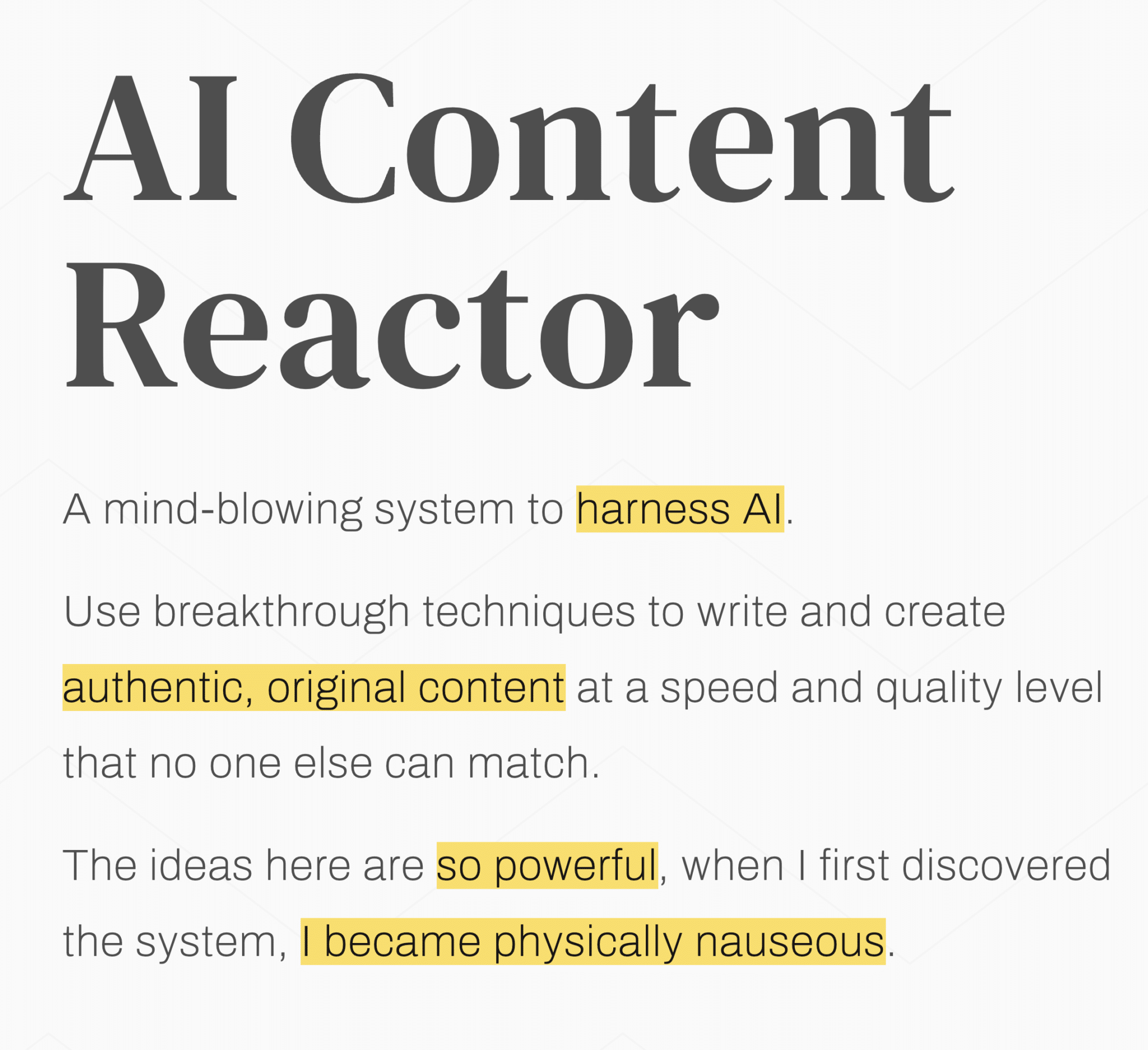Table of contents
Visibility and engagement are key to the success of online business; inbound marketing is the customer-centric approach that adds value at every stage of the buyer’s journey. The shift towards inbound marketing has been huge, as businesses try to build meaningful connections with consumers rather than just getting sales.
This article is a treasure trove for online business owners who are ready to navigate through the fundamentals, strategies, and nuances of inbound marketing. We’ll help you understand the intricacies of this holistic approach with insights and actionable steps to help your online business grow.
What is inbound marketing?
Now, we’ll be the first to admit that marketing has a lot of buzzwords, but inbound marketing isn’t one of them. It’s actually a robust method involving various tactics (that we’ll cover a little later) that come together to holistically promote online businesses. The aim? To guide potential customers towards your products or services in an organic way and nurture them until they’re satisfied, paying customers and brand advocates.
Inbound marketing vs outbound marketing
Inbound marketing attracts leads into the customer journey by creating valuable content and tailoring personalized experiences. It brings them to the business instead of the business searching for them.
Outbound marketing uses advertising, both on and offline. Your sales team is busy cold-calling, creating Google and Meta ads, sending out postcards, creating radio and TV ads, and interrupting your audience with content they don’t always want.
Inbound marketing flips outbound marketing on its head.
Outbound marketing has its place, no doubt, but inbound marketing is the name of the game for conversions. According to ZipDo, inbound converts 12.9% more than outbound. That’s quite a difference!
Instead of television ads that scream at potential customers to “buy, buy, buy” or junk mail that gets thrown away, inbound marketing has a gentler, more persuasive technique. Entertaining, informative videos, interesting blogs, helpful content, and tools – inbound marketing is a soft, inviting whisper rather than a pounding sledgehammer. With these tools and techniques, highly qualified customers are attracted to the business through curiosity, confidence, and trust.
When you provide engaging, relevant information, people will continue to visit your site, but it can take time. So, why bother? What’s the value here?
What is the value of inbound marketing?
It’s been our experience that business owners who mainly receive referrals have the most challenging time seeing any value in inbound marketing. The philosophy seems to be, “I don’t need to market. My customers market for me.” Yet, when you ignore inbound marketing, you ignore a distinctly profitable, highly effective method of building your online business.
More qualified leads for less cost.
If you’re so busy you don’t have room for more clients/customers, and you don’t want to hire someone for the overflow, well, you might not need more leads. If you’re ready for more leads, inbound marketing is something you might want to look into.
This is a more serious consideration than you might think at the get-go. Who doesn’t want more traffic and leads, right? However, it can take time to build up enough staff to handle an influx of sales. You should always have a hiring plan to scale your business safely. Several startups and young businesses have failed for that very reason.
Now, more traffic doesn’t mean much if it isn’t qualified traffic. For example, if you’re selling shoes, someone looking for pants that happens to land on your site is probably not going to be your target customer. You might be able to convert them, but it’ll be a lot harder than the person looking for shoes. Using segmentation, personalization, and optimization can help you better reach the ones that want your product or service.
Inbound marketing also tends to cost less for better results. Traditional outbound, for example, can cost over $20K for radio or TV in one go. Depending on the type of digital outbound and your product or service, online ads can quickly burn through that $20K.
On the other hand, you could have a whole slew of inbound marketing tools in place and still have enough left over to treat yourself to a lot of lattes.
There are seven core concepts of inbound marketing strategies.
In a nutshell, inbound marketing delivers solutions and opportunities in a way that has a positive impact on people and your business. Through your inbound marketing efforts, various types of content, personalization, and more, you provide leads with the tools they need to make an informed decision. This builds trust, which influences their purchasing decisions.
What do inbound strategies involve? Here are the seven core concepts of inbound marketing:
1. Create and distribute content.
If you’ve heard it once, we know you’ve heard it a thousand times, but content is still king. Persuasive writing, helpful tips, and tools help attract potential customers to your website or business.
- Create blog posts, ebooks, and webinars that address the problems and needs of your ideal customers.
- Share content on social media to engage and interact with your audience.
2. Practice lifecycle marketing.
- Attract the right people with content.
- Engage and build lasting relationships through tactics like email and social media.
- Delight by providing an excellent customer experience.
3. Personalize your content throughout the buyer journey.
- Segment your leads into buyer personas, tailoring your content as you learn more about each segment’s needs, pain points, and goals.
- Personalize content based on individual needs and preferences with smart content.
4. Use search engine optimization (SEO) for organic traffic generation.
- Learn what terms and phrases your personas use that are related to your service or product offerings.
- Optimize your website with those terms and phrases to increase search engine ranking and traffic.
5. Develop pages for lead generation and conversion.
- Design landing pages that focus on conversion goals. esigning pages with a focus on conversion.
- Incorporate forms and calls-to-action (CTAs) to guide users through the conversion process.
6. Integrate email marketing and automation.
- Automate marketing tasks with workflows that nurture leads.
- Engage with leads and customers through email, regularly sharing relevant content and offers.
7. Analyze and measure performance.
- Watch your metrics and key performance indicators (KPIs) to understand what’s working and what’s not.
- Improve your marketing strategies by using those insights to optimize continuously.
Now that we’ve covered the core concepts that characterize inbound marketing, you might get the idea that implementing inbound strategies efficiently can be pretty complex. This is where inbound marketing tools come in, streamlining and enhancing the effectiveness of your marketing efforts.
Introducing your first inbound marketing tools.
These tools all have a few things in common. They:
- Create interest
- Increase your level of authority (or, at least, what people perceive as authoritative)
- Help you build your brand
With that in mind, let’s get to the list, shall we?
Well-crafted website
Websites are a dime a dozen. We’re sure you’ve seen at least one that made you want to quit searching for things online. Don’t make these design mistakes, and you’ll be halfway there.
Well-organized website
Are your products (or services) and information mixed? –Or did you spend a lot of thought on creating sections that make sense?
Think of your site as half library, half car parts store. You wouldn’t have your car parts sitting in front of the books or the books sitting in front of the car parts. You’d have two sections – and so should your website.
Optimized website
Optimization does a lot for SERP ranking. However, ranking is not the only goal, and it’s not the only outcome. Optimization helps make sure your site seldom deviates from its topic. When you look at keywords, it’s a long list of potential topics to write about and share with your visitors. When done right, SEO leaves no room for accidentally off-topic content. Therefore, the site is a gold mine for people interested in that topic.
High-quality blog posts
Blogs give people a reason to come to your site beyond the marketing. They also give a way to publicize your authority. A high-quality blog (i.e. well written, engaging, topical posts) has a good chance to go viral, creating more publicity, more visits, and a wider reach.
Newsletters
There are a lot of questions about whether email marketing works. It does, but you must know the steps to get visitors to sign up. For example, having one doesn’t do any good if you don’t offer it – and you can’t just offer the newsletter in tiny print in a hidden corner of your site.
Have a blog? Most people don’t mind a short, sweet pop-up inviting them to get the blog in their inbox. Three products that offer email marketing creation and support:
Printable information
Printable information can be an excellent resource for individuals wanting to learn about your product, service, industry, or industry news. It can also be an excellent tool to share what you know. If you can provide these items, don’t leave them out!
Do you offer white papers? If the content is good enough, you can request a name and email before allowing the download. What about PDFs? Same, same. Examples of printable information:
- White papers
- PDFs
- eBooks
- reports
Social networking
Yes, we brought out social media as an inbound marketing tool. Why? Generally, social media is “passive” marketing. In other words, it’s not a place to pour your ads, discounts, and company braggadocio. You can occasionally share this stuff, but the main point of social networking is to, well… network. The big ones:
- Meta (Facebook)
- X (Twitter)
- LinkedIn (LinkedIn)
Inbound marketing works if you work inbound marketing.
We’ve gone all the way around the corner. We hope you’ve learned a lot, but frankly, none of this stuff works if you don’t use it.
- A good design only goes as far as the organization of the site
- An organized site only goes as far as the product or service offered
- A blog only works if it has excellent content
- In marketing to a niche audience, content only goes so far as its relevance (or optimization)
- Great content does no good if no one sees it
- No one will see it if you don’t give them a way to see it
- Etc, etc, etc…
Build your toolbox with a customer-centric approach in mind. Use your tools, from crafting beautiful, enticing blog posts to networking on that busy social network. Give people a way to sign up to your newsletter and use the seven core inbound marketing concepts. Be good to inbound marketing and inbound marketing will be good to you.
Do you need help creating effective inbound marketing campaigns and strategies? We can help! With more than 20 years of experience in marketing, we know what it takes to help your efforts succeed. Contact us to discuss your marketing challenges.







































One Response
Great post